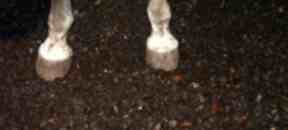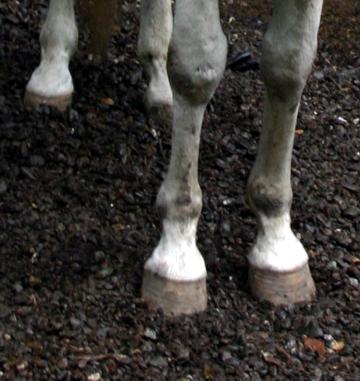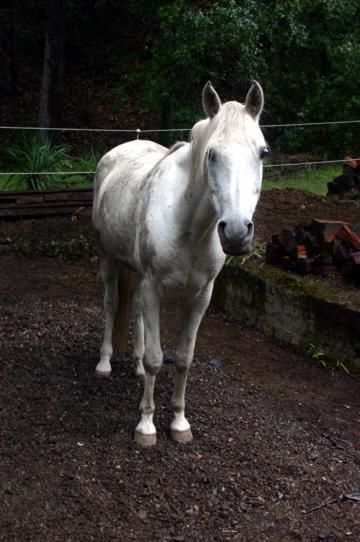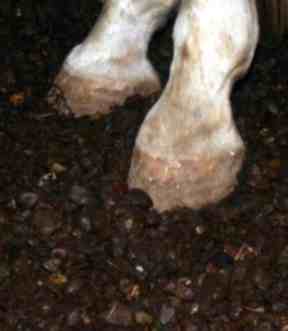I
asked Pete Ramey for recommendations
on training my endurance horses
feet to be "Gravel Crunchers"
at a Jacksonville, Oregon, Pete
Ramey clinic.
Pete's recommendation is to
make an area containing loose
smooth pea gravel (not crushed
rock gravel) available to horses
for at least a few hours a day.
The area would need to be kept
free of manure, debris, and
loose dirt or it would become
packed down.
Pea Gravel is usually about pea size. In these pictures, I used larger gravel that is between 1/2 inch to 1 inch in diameter because it was available on the property. If I was buying gravel I would get smooth 1/8" to 3/8" pea gravel.
Soft ground needs preparation. A 10 to 12" deep wood frame helps retain pea
gravel. I build a solid base layer using 4 to 6 inches of road base, which I pack hard by watering it deep and using a roller or tamper to pack down. I use Class 3 road base, which is 1" rock mixed with with "fines" for a base.

Construction cloth
will help keep gravel from mixing
with soft or loose subsoil but it must be anchored down and put under the base layer. I personally try hard to not use construction cloth!

|

My horses
urinate in the gravel, so I rinse it occasionally
to eliminate ammonia buildup.
Gavilan loves
his gravel!! He doesn't spend
a lot of time standing still
on it, but he and Shatirr both
go out of their way to stroll
through 5 or 6 times an hour.

|
These pictures were form my place in Guerneville in 2007. The Gravel Pile at this location was on
the way to the water trough, I also used large rock to
cobble an area large enough
to feed the boys on, (16x20) and placed
large broken rocks around a
tree they loved rubbing
on... I thought they'd stay
off the sharp broken shale (I'm discouraging them
from too much rubbing and chewing),
but it didn't deter them.
The combination of gavels,
rock and cobble stimulated the horses
soles to build callous while
abrading the hoof wall the way
a natural environment would.
The cobbled shale surface allowed water
to run off and was easy to rake
clean of manure and spoiled
hay. Rocked surfaces can be
occasionally rinsed to remove
manure.
|
"Road base" is usually decomposed (crushed) granite with a mix of "fines" (powdered granite) and gravel. It's the same stuff that's used under asphalt roads.
There are different classes differentiated by the size of the gravel they contain. When I order road base in California, I usually get class 2.
When I use it in paddocks that tend to be extremely muddy or soft, I prepare the surface by removing organic material (manure, leaves and grass), then line the area with landscaping cloth. This is inexpensive recycled plastic that allows water to drain but keeps whatever is on top of it from mixing with the soil beneath it.
Then I frame in the area where I want to put a road base pad with 2x6 boards to hold the base. I then fill the frame with enough road base to have it start out at least 5 inched deep , spread it out so that it is slightly higher at one end than the other (to encourage drainage), and water it thoroughly (so that water comes out the bottom of the frame) with a sprinkler. Once it's watered I roll it repeatedly with a lawn packer or pack it down with a vibrating packer until its hard as cement. Then I water it and re-roll or pack it again.
If the pad is rolled hard and manure and organic material are kept off of it, it should last for several years. This pad sheds water nicely or drains if a puddle occurs and is great for feet. |




